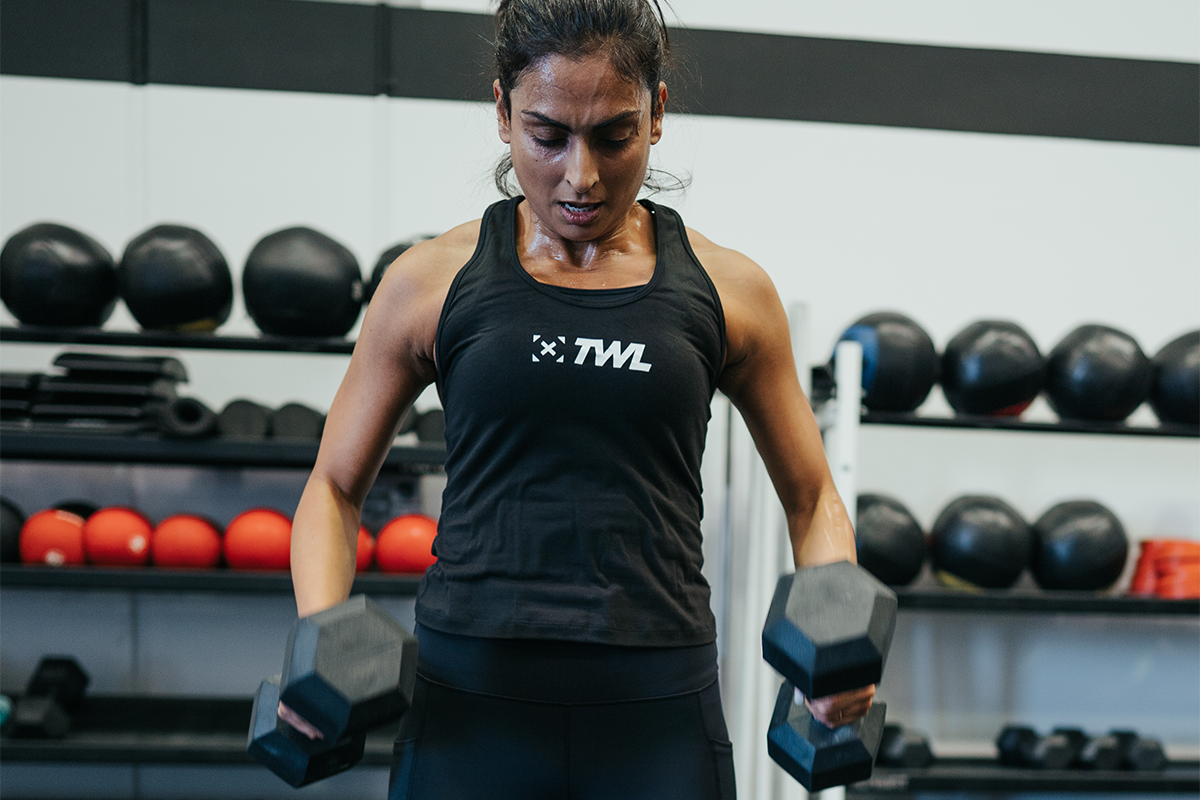When it comes to training with dumbbells, there are literally infinite exercises you can do. One such exercise is the dumbbell row, also known as the bent-over row. In this blog, we’ll talk about:
- What dumbbell rows are.
- How to do them.
- Some of the benefits.
- Variations of the dumbbell row.
To follow along, make sure you have your own set of dumbbells to exercise with. You can also swap these for kettlebells, instead, and even a barbell.
Shop Now
Not sure which ones to pick? Check out our dumbbell buying guide to learn how to choose the best dumbbells for you.
Let’s do it!
What are Dumbbell Rows?
Dumbbell rows are a type of strength training exercise that works the back, core, shoulders, and arms muscles. The exercise is performed by holding a dumbbell (or kettlebell) in each hand and then bending forward at the waist. The dumbbells are “rowed” (read: pulled) up to the chest and then lowered back down.
How to Do Dumbbell Rows in 4 Steps
Let’s break the dumbbell row down into more concrete steps. Note: There are many variations of this, which we’ll get to in a moment!
- Hold a dumbbell or kettlebell in each hand. Start with something challenging but very doable so that you can first get comfortable with the technique. Stand with your feet about shoulder-width apart, knees soft. (Some athletes feel more comfortable keeping their feet together. Try both and compare!)
- Bend at the hips so that your torso is somewhere between approximately 45 and 90 degrees.
- Pull your elbows back so that you bring the dumbbells to your chest. At the top of the movement, pause and think of squeezing your shoulder blades.
- Lower the dumbells back down, staying engaged so that they don’t merely hang there. This completes one rep.
Athletes typically perform dumbbell rows at higher volumes, so, try something like 3 rounds of 8-12 reps.
The Benefits of Dumbbell Rows
Dumbbell rows are an excellent exercise for targeting your back muscles. They are also effective for working your biceps, triceps, and shoulders. They even target your core, which has to engage to keep you in the right position. In addition, dumbbell rows help to improve your posture and can be used to correct muscle imbalances.
Furthermore, dumbbell rows are a great exercise for beginners because they can be performed with little equipment and without a spotter. They are also relatively easy to learn and execute.
Variations of the Dumbbell Row
As we mentioned earlier, there are many ways to switch up the dumbbell row. Here are just a few suggestions:
- Play around with how much you hinge at the hips. Some athletes bend over only slightly, while others bring their torso parallel to the ground, and still others perform rows completely upright!
- Kneel with one knee on a bench. Perform a single-arm dumbbell row on the opposite side.
- Try kneeling rows. You can do this kneeling on the ground, on one or even both legs.
- Give renegade rows a shot, where you perform a single-arm row while holding yourself in the plank position.
Truly, there are countless ways to put a spin on your traditional dumbbell rows. Remember to choose a challenging weight (but not one that causes you to hit failure), and perform the movement slowly and under control. This is a great accessory exercise to add to your everyday programming to boost your gains and build strength.
If you liked this blog, be sure to check out our post on dumbbell pullovers!













